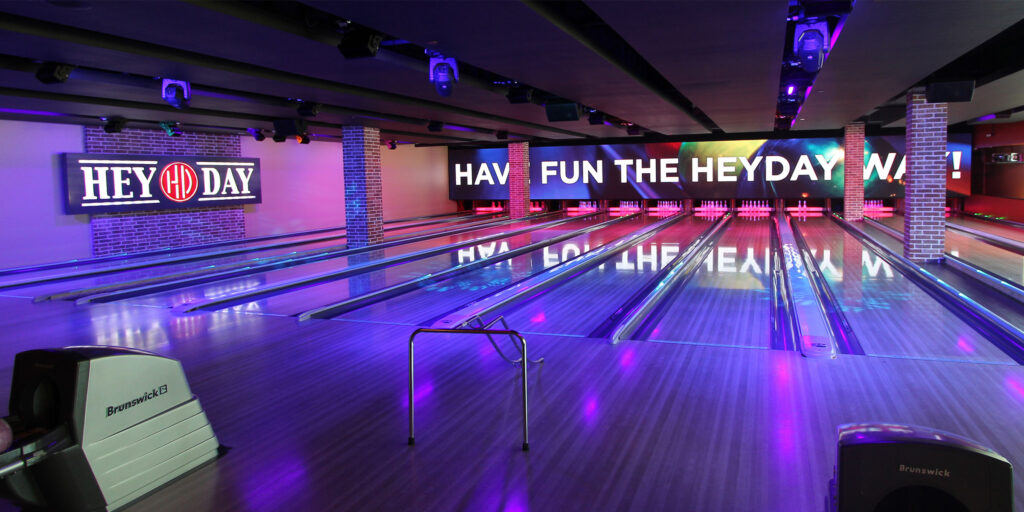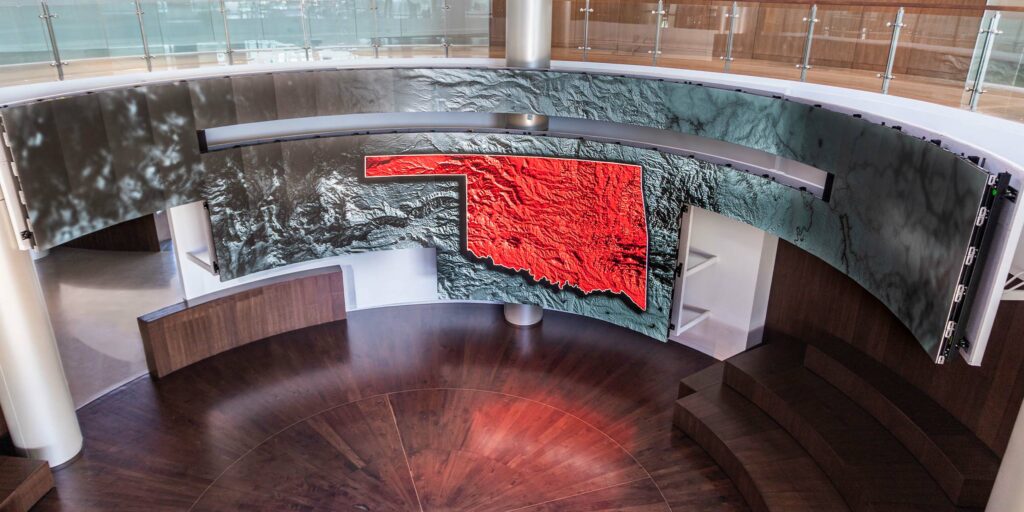Direct View LED (DVLED) technology is quickly becoming the preferred choice for creating high-resolution, vibrant displays, suitable for both permanent installations and rental staging. However, DVLED displays are different from traditional screens in a few important ways. These displays are modular, which means they’re built from several smaller panels combined to form a larger display. This modular nature brings exciting flexibility but also requires careful planning to ensure a smooth installation.
If you’re considering a DVLED installation, here are key factors to discuss with your integrator to ensure your display performs optimally in your space.

Understanding Site Conditions: The First Step to Success
The location of a DVLED installation plays a critical role in the display’s overall effectiveness and longevity. Whether the display is installed indoors or outdoors, site-specific factors—such as humidity, ambient light, and even power source proximity—will impact both its visual performance and durability. For example, high humidity in outdoor settings can require a weatherproof setup, while environments with strong ambient light may need a high-brightness DVLED to retain sharp visuals.
Also, consider where the audience will view the display from. Will they be viewing it from below, above, or straight on? Are there frequent obstructions in the space, like support columns? The answers to these questions influence display placement and setup. By understanding and planning for these site-specific factors, you lay a solid foundation for a successful DVLED installation that will look great and stand the test of time.

Pixel Pitch and Viewing Distances: Ensuring Visual Clarity
One of the most important factors in DVLED installations is determining the pixel pitch. Pixel pitch refers to the distance between the center of one LED pixel and the center of the next. This distance is key in controlling how sharp an image will appear when viewed up close. A smaller pixel pitch means more pixels per inch, resulting in a sharper image—especially beneficial for installations where viewers are close to the display, like in retail spaces, museums, or lobbies. Conversely, in large event venues or auditoriums, a larger pixel pitch can still deliver great visual quality while reducing overall costs.
When considering pixel pitch, think of how far the closest viewer will typically be from the display. Working with an experienced installer helps ensure you select the best pixel pitch for your specific viewing needs, so the image quality is excellent from every angle.
Front Access vs. Rear Access Panels: Simplifying Maintenance
DVLED displays can be designed for either front or rear access, which impacts how easily they can be maintained and repaired. With front-access displays, maintenance and servicing can be done directly from the front of the display. This is ideal for wall-mounted displays or any setting where space behind the display is limited. By contrast, rear-access displays require clearance space at the back for maintenance, which may offer a little more design flexibility if space allows.
The choice between front and rear access is crucial for long-term maintenance convenience. Access type is often determined by the installation site and surrounding space, so it’s a good idea to discuss access options with your installer early in the planning phase.

Heat Management for Longevity and Performance
LEDs generate heat, and without effective heat management, this can degrade image quality and reduce the display’s lifespan. To combat this, many installations require ventilation systems or built-in cooling mechanisms, especially in warm or enclosed environments. Effective heat management is particularly important for larger displays or for displays intended to run continuously, as consistent temperature control helps maintain consistent brightness, color accuracy, and panel longevity.
By planning for proper heat management, you’re ensuring that your DVLED display will continue to operate reliably even in challenging conditions. An experienced installer can recommend the best cooling solutions based on your display’s size, site location, and operational needs.
Structural and Mounting Considerations
Because DVLED displays are modular, they offer unmatched flexibility in terms of display size and configuration. However, this modularity also means that weight can vary widely based on the setup. For large or custom-shaped displays, a strong, reliable mounting structure is essential to support the weight and prevent any safety hazards. Depending on your needs, DVLED displays can be mounted permanently, using customized frames, or temporarily, for rental staging that prioritizes easy assembly and takedown. While walls may look flat, they’re often not perfectly even, which can cause issues in panel alignment. Using a precise frame with XYZ axis adjustment capability ensures that each panel sits flush, providing a seamless appearance and eliminating visual inconsistencies across the display.
Think of your DVLED display like a modular wall—it needs a solid foundation and framing to keep everything stable and secure. Working with a certified professional who understands DVLED installation requirements will help ensure the display is safely mounted, regardless of its size or configuration.

Spare Panels and Maintenance Readiness
Because DVLED displays are modular, they are composed of individual panels, which can be replaced if they’re damaged or start to malfunction. It’s a good idea to keep a few spare panels on hand for quick replacements, minimizing downtime and avoiding any noticeable disruptions in the display. This is particularly important for high-traffic or commercial environments where the display may see a lot of use. Additionally, it’s helpful to have a maintenance plan with your installer to handle replacements and recalibration as needed, ensuring the image remains unified and seamless.
Having spare panels and a clear maintenance plan helps ensure your display investment remains functional and visually consistent over the years.
The Importance of Certified Installation
Most DVLED manufacturers require installation by certified professionals to maintain warranty coverage and ensure proper setup. Certified installers have specialized knowledge of DVLED technology and are trained to handle the precise alignment and calibration that these modular displays require. With the modular structure of DVLED panels, small alignment errors or pixel gaps can become visible, affecting the seamless look of the display. Certified professionals understand these nuances and can configure your system for flawless visual quality, especially in large or high-resolution setups.
Opting for certified installation protects your investment, ensures professional-quality visuals, and often extends the lifespan of your display.


Key Takeaways for a Flawless DVLED Installation
Here’s a quick recap of the most important factors to consider when installing a DVLED display:
- DVLED displays are modular and customizable, making them ideal for unique spaces and configurations.
- Site conditions and pixel pitch are key for ensuring image quality and viewer satisfaction.
- Certified installation protects your investment and achieves a professional, seamless look.
- Spare panels and maintenance planning prevent downtime and protect the display’s longevity.

Ready for Your DVLED Installation? Reach Out to Ford AV for Expert Guidance
Installing a Direct View LED display involves much more than simply mounting screens. Every factor—from site conditions and viewing distance to heat management and certified installation—plays a role in the display’s performance and longevity. Ford AV’s team of experienced professionals can help guide you through every step of the process to ensure an installation tailored to your needs.
If you’re ready to explore how DVLED can transform your space, contact Ford AV today to start planning your display. Let’s bring your vision to life!
